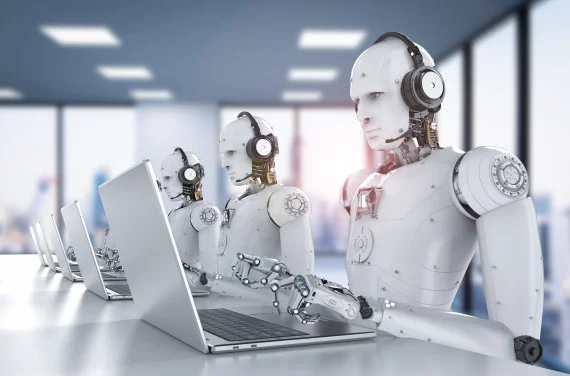I'm not afraid that a machine will replace me. In Berlineo, no one has such fears, or at least not yet. But we know that there are people on the translation market who are already afraid of "artificial intelligence." We also know where these fears and concerns come from. Do you want to know too? Read on!
Machine translation vs. human translation
Machine translation is nothing new. The history of research and experimentation in the field of automatic translation began in the 1950s. It doesn't surprise me at all that humans are looking for a solution that will effectively facilitate communication. Especially today, when an unprecedented amount of content is being translated in all possible language combinations.
The technological development of the 21st century has meant that today, in the context of translation services, we are talking about the translation industry, whose global turnover reaches many billions of dollars per year. So it should come as no surprise that large corporations are competing with each other to develop mechanisms that will reduce the costs of translation or cut out a piece of the "translation pie" for themselves.
The most interesting thing, however, is that if the task of developing algorithms that enable automatic translation were possible to achieve, I would not have written this text. There would be no profession of translator, no translation agencies, and no need to run blogs like this one.
Despite the intensive work on neural machine translation and the increasingly better results of these mechanisms, the number of translators in the world is increasing, platforms supporting translation are still being developed, and at the same time, the awareness of translation agency clients is growing. Would this be possible if language algorithms could replace humans?
Why do I still have a job as a translator?
From the perspective of a tourist who doesn't know English (or Arabic) and is spending a vacation in Egypt, using a platform that offers online machine translation while bargaining with a local shopkeeper or asking a local for directions, the translator is completely unnecessary.
Unfortunately, things get much more complicated when you need to translate a written trade agreement worth millions of dollars, a marketing catalog, or industrial machine safety instructions.
In each of the above cases, you can use the "services" of a machine - on the beach, in a store, or in the office of a technical or marketing department. However, many questions arise in this context. Here are some of them:
- Who will be responsible if, when implementing a contract based on an incorrect machine translation, we violate its provisions and cause significant damage?
- Who will we blame in the event of injury or death of maintenance personnel who, acting in accordance with incorrectly translated instructions, cause an accident at work?
- How will we cope with situations where the servers of machine translation providers are unavailable?
- How will we know that the aforementioned servers have not fallen victim to a hacker attack, as a result of which the translation algorithms are playing tricks on their users?
New algorithm, a lot of media noise, old problems
Of course, all the problems mentioned earlier have always existed in our industry, because human mental work is prone to minor or major errors. This is simply part of human activity. Making mistakes is human.
However, in order to minimize the risk of serious accidents, appropriate industry practices have been developed. These include, for example, the four-eyes principle, or the extensive QA mechanisms available in most translation tools. The translation industry is no exception in this respect - quality control plays an important role in Western culture.
Although human translation is not always better than machine translation, in the case of a human, we can assume that the translation is accompanied by a thought process that results in an understanding of the translated content. It should be assumed that without understanding the content, it cannot be correctly translated into another language.
However, we know from experience that clients often receive translations that immediately show that the author has no idea about the topic of the translated document.
Our jobs are not at risk
The same problem occurs with machine translation. The task of algorithms is not to understand the issues, phenomena, circumstances, etc., mentioned in the content that requires translation. According to experts in the field of artificial intelligence, this also applies to ChatGPT.
The algorithm will not try to find a new, different, better way of expressing a particular phrase in the target language. There is nothing groundbreaking in this mechanism, as it still cannot understand the world and relies only on available information (corpora, images, patterns, schemas,...).
However, the results of the translation algorithms are getting better over time. Sometimes they are good enough to make some service providers in the translation industry lose sleep. However, in my opinion, we will be able to sleep peacefully for some time to come.






